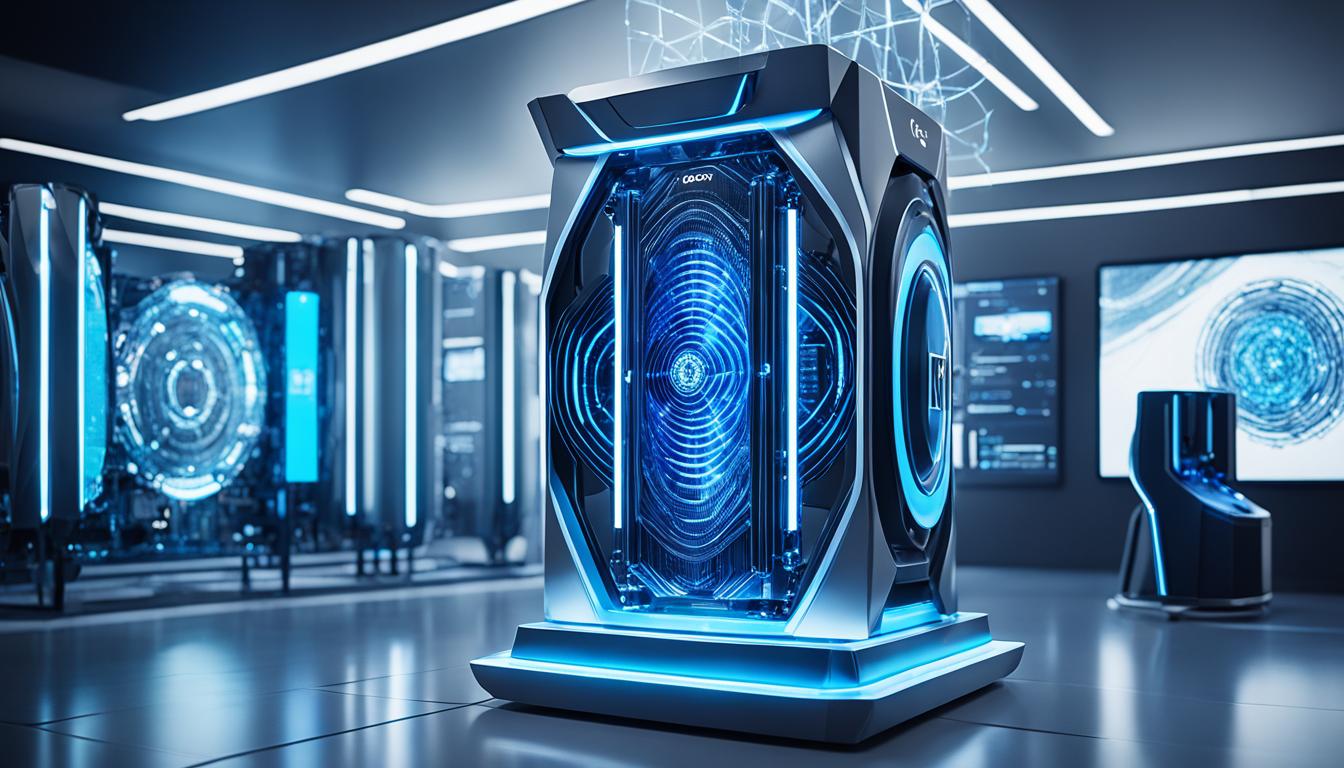High-performance computing (HPC) and Quantum Computing (QC) are two
technological frontiers that, at first glance, share a common goal: processing data faster
and performing complex calculations. However, despite apparent similarities in
objectives and applications, they are distinct in their technological underpinnings and
operational paradigms.
HPC pulls the power of parallel processing to efficiently, and swiftly run advanced
application programs. This efficiency is achieved through a particular computer
architecture, sophisticated software, and optimized algorithms.
The architecture typically consists of a cluster of computers, or nodes, each equipped with multiple high- speed processors or cores, all interconnected through a high-speed network. This design
enables the distribution of large computational tasks across several processors,
facilitating the management of extensive datasets and the execution of intricate
simulations that surpass the capabilities of standard computers.
HPC systems are indispensable in a variety of fields, from scientific research to financial modeling, where large-scale computation and data analysis are paramount. While HPC and Quantum
Computing both aim for data processing, HPC operates on classical computing
principles, setting it apart in both approach and foundational technology.
In today’s industry, computational efficiency and data handling are crucial, primarily due to one factor: time to market. Accelerating this process through computer-based simulations, rather than traditional lab work, and the ability to analyze vast quantities of data to derive meaningful insights represent significant advancements.
Therefore, it’s essential to identify potential use cases where HPC and QC could collaboratively enhance workflows. Sanzio Bassini of Cineca in Italy, a consortium comprising 117 institutions including universities and public entities, highlights the potential for deploying and combining HPC and QC. This integration is vital for experimentation, justifying their convergence and enabling the optimization and adaptation of these tools.
Today, our objective in this article is to explore the integration of HPC and QC, and the potential use-case scenarios. We will examine various ongoing projects and strategies that demonstrate different approaches to this integration, shedding light on how these two powerful computing paradigms can work to revolutionize data processing and problem-solving.
Quantum as a Service: Pioneering HPC-QC Integration in Europe
Europe is at the forefront of exploring and implementing HPC-QC (High-Performance Computing – Quantum Computing) architectures, showcasing a diverse array of initiatives and projects that integrate a variety of quantum devices. Among these, the efforts led by Cineca, a prominent Italian consortium, stand out for their ambition and innovative approach.
Cineca’s teams are dedicated to researching and developing tools that seamlessly integrate Quantum Computing with existing High-Performance Computing systems. A key project in this endeavor is the Quantum Computing Lab, which is set to make a significant leap in the field. One of the lab’s primary goals is to introduce Italy’s first quantum computer, a system based on the principles of neutral atoms. This technology represents an innovative approach in quantum computing, differing from other explored methods such as superconducting qubits.

The integration of quantum computing resources into existing computing offerings marks a significant evolution in the computational landscape. This development is not limited to providing actual computing hours on quantum machines in the cloud; it also encompasses classic HPC resources capable of emulating quantum algorithms. This blend of quantum and classical computing resources is reshaping how computational tasks are approached and executed.
At the forefront of this integration is Cineca’s Quantum Computing Lab, which has embraced the Quantum as a Service (QAS) model, akin to other “as-a-Service” frameworks like Software-as-a-Service (SaaS). In collaboration with D-Wave, the lab offers cloud resources for quantum computing. These resources include calculation hours on D-Wave’s quantum annealers, with over 30 projects already approve to use this service.
Furthermore, Cineca is expanding its quantum cloud offerings through a partnership with PASQAL. PASQAL’s Quantum Processing Unit (QPU) operates at room temperature and in a standard environment, boasting low energy consumption. Their recent venture involves attempting graph-based problems by combining PASQAL Quantum Technology with NVIDIA GPUs.1 Graphs play a pivotal role in a wide array of applications, such as streamlining traffic flow in smart cities, enhancing network security protocols2, and others. PASQAL employs a hybrid model, using a classical computer for parameter optimization and a combination of a Quantum Processing Unit (QPU) and classical Processing Units (CPUs or GPUs) in a HPC Cloud environment3.

Schematic of PASQAL method. © Editor design.
The Quantum as a Service (QAS) offering from the Quantum Computing Lab at Cineca represents a significant leap in computational capabilities. Central to this advancement is the deployment of HPC Emulators on Leonardo, ranked as the fourth most powerful supercomputer globally4. This initiative is anchored by a quantum resource module, properly named the Quantum Suite. Designed for high-performance computing, the Quantum Suite stands out as an efficient and modern emulator, tailored to meet the demanding requirements of HPC environments.
Cineca’s commitment to innovation is further evidenced by its development of multimode emulators. This includes State Vector Emulators and Analog Computing Emulators, among others, offering a versatile range of computational tools. A notable feature of this system is its user-friendly interface; with a single command line, users can seamlessly select their preferred Software Development Kit (SDK) or HPC library. This flexibility allows for a wide array of choices: cirq (Google), Ocean (D-Wave), Qiskit (IBM), Pulser (Pasqal), PennyLane, among others; catering to diverse user preferences and project requirements.
GENCI’s Photonic Quantum Computing Initiative in France
In parallel, other European initiatives are making strides in the field of quantum computing. A prime example is GENCI in France, which is exploring the potential of photonic quantum computers. These systems are notable for their operation independent of temperature constraints and their ability to maintain long coherence times5. GENCI’s foray into this technology is not just about exploring new frontiers in quantum computing; it’s about making these advanced capabilities more accessible. Emulation capabilities are already in place, with plans to make them available to users in the first semester of 2024.
These developments in Europe, from Cineca’s Quantum Suite to GENCI’s photonic quantum computers, highlight a growing trend in the computational world. By integrating quantum computing resources with traditional HPC systems, these initiatives are not only pushing the boundaries of what’s possible in computing but also making these advanced technologies more accessible to a broader range of users.
Quantum Computing Simulators on HPC Systems
The integration of QC with HPC systems is gaining momentum across Europe, with Germany playing a pivotal role in this advancement. The collaboration between the Leibniz Supercomputing Centre (LRZ), one of Germany’s three national supercomputing centers, and IQM Quantum Computers, a European leader in QC, exemplifies this trend.
LRZ has been at the forefront of integrating quantum computing with HPC. Currently, the center houses three quantum computing systems – two based on superconducting technology and one on an ion trap mechanism. While these systems are not yet publicly accessible, plans are underway to make them available in the coming year. LRZ’s approach to quantum computing goes beyond hardware; they have also focused on dedicated quantum simulators, accelerators, and software development frameworks. Notably, LRZ has deployed PennyLane and Qiskit on their HPC systems. PennyLane has been integrated with NVIDIA’s DGX A100 systems, while efforts are ongoing to deploy Qiskit on Intel Skylake processors.

On the other side of this collaboration, IQM is actively exploring early applications of quantum computing with HPC across several use-cases, organized into distinct work lines: machine learning, optimization, partial differential equations, and fermionic simulation. In the scope of fermionic simulation, IQM is focusing on applications related to battery optimization. This includes working with transition metal oxides (TMOs) in partnership with the German Aerospace Center (DLR). Proof of concept (PoC) for a battery toy model is underway to study the chemical properties of TMOs used as cathode materials.
In the optimization domain, IQM is collaborating with a national electric company to address the challenge of power plant outage scheduling. This involves investigating quantum solutions for highly constrained problems. A PoC scheduling problem has been addressed using amplitude amplification, and further investigations are exploring other approaches, such as the Quantum Approximate Optimization Algorithm (QAOA).
The Challenges of Integrating HPC with Quantum Computing
The quest to connect the combined power of GPUs (Graphical Processing Units) and QPUs (Quantum Processing Units) presents a fascinating array of challenges and opportunities. While the potential of QC is immense, particularly in terms of scale, noise management, fidelity, and integration, its amalgamation with HPC systems introduces a unique set of complexities. We will talk today about integration.

CPU and GPU © Wikimedia commons.
One of the primary challenges in this integration is the physical and functional incorporation of the Quantum Processor as a distinct module within the broader HPC architecture. This involves not only the physical construction and connection of these advanced systems but also the development of dedicated algorithms that can effectively leverage the combined capabilities of CPUs, GPUs, and QPUs. These algorithms must be intricately designed to optimize the strengths and mitigate the limitations of each component, ensuring a seamless and efficient computational process.
Another significant aspect to consider is hardware variability. Given the nascent stage of QC technology, there is currently no standardized hardware model for HPC-integrated quantum computers. This means that depending on the chosen quantum computer, the hardware configuration of an integrated system can vary considerably. This lack of standardization, while challenging, also opens doors to customization and innovation, allowing for the development of diverse solutions tailored to specific computational needs and objectives.
Despite these challenges, the integration of QC and HPC holds promise. The field is starting to evolve, with continuous collaboration and advancements in quantum technology and algorithm development. As we move forward, we can expect to see more robust, efficient, and versatile integrated systems that push the boundaries.
Tensor Network Emulators in HPC: Quantum Matcha Tea
The current orbit of replete with innovative approaches to solving complex computational problems, and tensor network (TN) simulators represent a fascinating alternative in the QC landscape. While running quantum algorithms on actual devices is the ideal scenario, challenges such as noise and limited qubit availability often necessitate alternative solutions. This is where tensor network simulators come into play, offering a unique and powerful approach to QC.
Tensor Networks stands as a contestant to traditional quantum computing. TN are essentially a framework for representing sets of correlated data and finding extensive applications in areas like quantum many-body systems, path integrals, statistical mechanics, and big data analysis. In Spain, companies like Ibermática are using also Tensor Networks to develop algorithms capable of tackling problems such as the Traveling Salesman Problem or solving systems of linear equations6. These applications, previously discussed on this platform, highlight the significant potential and versatility of TNs.
Therefore, we present Quantum Matcha Tea, a TN emulator that operates within a HPC framework. Designed to be HPC-friendly, Quantum Matcha Tea is engineered to maximize the capabilities of both CPUs and GPUs. According to Sara Marzella from Cineca, Quantum Matcha Tea excels in handling large circuits with moderate entanglement, making it a valuable tool for a wide range of quantum computing applications.
One of the most remarkable aspects of Quantum Matcha Tea is its accessibility; it is entirely public, democratizing access to advanced TN simulation capabilities. This openness not only fosters wider experimentation and innovation in the field but also allows for greater collaboration and knowledge sharing within the scientific community.

Quantum MATCHA Tea logo. © Quantum MATCHA Tea.
Hybrid HPC-QC Software and the Rise of Quantum Start-ups
In the dynamic landscape of HPC and QC, companies like Eviden (formerly Atos) are leading the charge in Europe. Eviden has broadened its focus to include industry applications alongside academic research. A key development in their portfolio is Qaptiva, a scalable solution for quantum computing programming, emulation, simulation, and hybridization. Qaptiva Access, a part of this suite, facilitates access to remote quantum computing resources.
Qaptiva Access server acts as a front-end server, orchestrating quantum resources and enabling the hybridization of HPC and QC. This system allows users to develop algorithms or Hamiltonians on their local machines and then seamlessly transmit them to either HPC systems or real QPUs for execution. This process ensures efficient scheduling and execution of jobs on the appropriate architecture.
Eviden’s approach, focusing on software solutions, is making significant inroads in sectors like aerospace, automotive, healthcare, and defense. Their work exemplifies the growing trend of applying quantum computing solutions to a diverse range of industries.
Similarly, NVIDIA, long known for its contributions to scientific computing, deep learning, generative AI, and now QC, is making strides with its CUDA Quantum platform. This hybrid developer platform is designed for both classical and quantum computers, optimizing workflows in quantum simulation, quantum machine learning, quantum chemistry, and more. CUDA Quantum leverages the power of GPUs to enhance these processes, collaborating with partners such as Atom Computing, IonQ, Xanadu, Quantum Brilliance, and others.
The advancements in hybrid HPC-QC software and the emergence of quantum start-ups mark a new era in computing. As companies like Eviden and NVIDIA continue to innovate and push the boundaries of what’s possible, the potential applications of QC continue to expand. This evolution not only signifies a technological leap but also indicates a future where quantum-enhanced solutions become integral to solving some of the most complex and pressing challenges across various industries. The journey into this quantum-enhanced future is just beginning, and the possibilities are as vast as they are exciting.
- De Castro, A. (2023, December 14). Tackling Graph-based Problems Combining PASQAL Quantum Technology with NVIDIA GPUs. PASQAL Articles. Retrieved on 20/12/2023.
https://www.pasqal.com/articles/tackling-graph-based-problems-combining-pasqal-quantum-technology-with-nvidia-gpus
↩︎ - Webb, J., Docemmilli, F., & Bonin, M. (2015). Graph theory applications in network security. arXiv preprint arXiv:1511.04785. ↩︎
- Thabet, S., Fouilland, R., Djellabi, M., Sokolov, I., Kasture, S., Henry, L. P., & Henriet, L. (2023). Enhancing Graph Neural Networks with Quantum Computed Encodings. arXiv preprint arXiv:2310.20519. ↩︎
- (2022, November). November 2022. TOP500. Retrieved on 21-12-2023.
https://www.top500.org/lists/top500/2022/11/
↩︎ - (2023, June 27). One step closer to European quantum computing: The EuroHPC JU signs hosting agreements for six quantum computers. Press Release EuroHPC JU. Retrieved on 21/12/2023. https://europa.eu/!YWJqF6
↩︎ - Ali, A. M., Delgado, I. P., Roura, M. R., de Leceta, A. M. F., & Romero, S. V. (2023). Solving Systems of Linear Equations: HHL from a Tensor Networks Perspective. arXiv preprint arXiv:2309.05290. ↩︎


